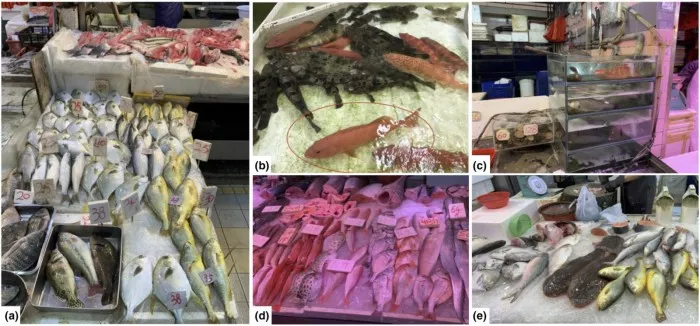
Aquatic animals continuously release their DNA into the water in the form of body fluids, exfoliated skin and excreta. This discarded DNA is called environmental DNA, or Edna for short. By collecting water samples from a specific geographical location, and then determining which species' Edna exists in the sample, we can determine which species live in the area.
In recent years, the technology has been used to assess the biodiversity of coral reefs, check whether the great white shark is nearby, and even look for the Loch Ness monster. It should be noted that Edna analysis is also applicable to the detection of animals on land.
Now, scientists at the University of Hong Kong have used the technology to find endangered species in the wet goods market. In a recent study, researchers collected drainage samples from three Hong Kong fish markets for five days. Tissue, blood and other cell fragments were obtained from these samples by filtration or precipitation.
When these materials were analyzed, they were found to contain Edna of protected species, such as brown spotted grouper, two breams and three eels. Subsequently, a visual inspection of the Hawker's stall confirmed the existence of all these species.
Part of the problem with relying solely on visual inspection is that many wet goods have a large market, including a large number of fish, and eye inspection takes a long time. In addition, endangered species are often slaughtered or sold with non endangered species with similar appearance, making them difficult to identify visually.
Of course, Edna analysis of sewage in the whole market can not tell the authorities which vendors are selling banned fish. However, it can at least let them know whether visual inspection is necessary. In addition, it can also provide them with a picture of which protected species are being sold and how many.
A paper on this study was recently published in ecological and evolutionary methods 》In the magazine.